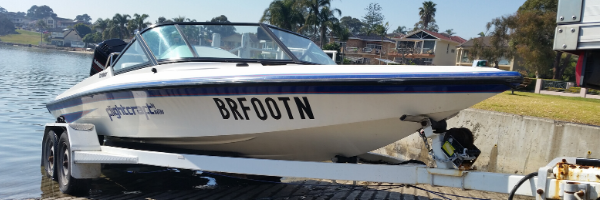1 – COUPLING
Check the coupling is secured to your tow ball and a locking mechanism is used so that the coupling cannot bounce off the tow ball while travelling.
2 – CHAINS
Look at your chains to make sure they are securely attached to the drawbar and that there are no worn down areas on the chains. Also check your Dee Shackles.
3 – WHEEL NUTS
Wheel nuts can loosen through vibration while driving. The best way to do this is by using a torsion bar and checking the manufacturers specifications for the right torque for your wheel nuts. If you don’t have a torsion bar you can check your wheel nuts by using the correct size socket and a breaker bar (often found with your spare wheel changing tools).
4 – LIGHTS
It helps to have someone help you to check the lights. Make sure your trailer plug is connected to your car and the car engine is on. Run through your park lights, brake lights, indicators and check that the number plate and all side marker lights are working.
5 – BRAKES (IF FITTED)
Mechanical Brakes – Make sure there are still 2-3 clicks left on your handbrake when the handle is applied.
Electric Over Hydraulic Brakes – Make sure when you apply override on your brake control unit that the brakes come on. Check there is enough hydraulic fluid in the reservoir on your coupling.
6 – TYRES
Visually inspect your tyres for any cracks or excessive or uneven wear of the tread. Also check the tyre inflation to make sure you don’t have a flat tyre. Your tyres will be marked with a ‘MAXIMUM’ PSI that your tyre can handle. Make sure that you inflate your tyres 10 – 15PSI less than the Maximum.
7 – TRAILER PLUG
Visually insect the trailer plug to make sure it is not broken. Make sure none of the pins have broken off, pushed in, bent or closed together. Make sure the wiring going into the base of the trailer plug looks secure and is protected by conduit and/or electrical tape.
If you have Anderson plugs, make sure they are not broken and that the wiring going into the base of the plug looks secure and is protected by conduit and/or electrical tape.
8 – WINCH
Check that your winch hook is holding the boat in place and that the strap or cable is not frayed or damaged and that the length of chain welded to your winch carrier is D-shackled to your boat. Make sure you have your winch handle if it’s a removable one.
9 – FRAME
It’s always a good idea to check the frame of the boat trailer for rust, cracks or imperfections
10 – ROLLERS AND SKIDS
Make sure the boat trailer rollers have not dropped and that no rollers have fallen off or have been damaged.
If you have skids, make sure the carpet or poly pads have not come away from the skid otherwise you risk damaging the boats hull.

